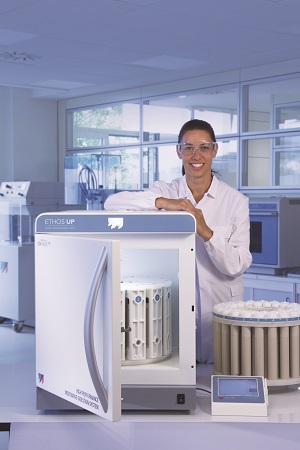
Traditional sample preparation techniques for foods include hot block digestion, closed vessel microwave digestion, and ashing with each of them posing different challenges. The hot block technique suffers from long digestion times, airborne contamination, poor digestion quality, and poor recovery of volatile compounds. Closed vessel microwave digestion has proven to be an effective technique with fast, complete digestions, a clean environment, and full recovery of volatile compounds.
Due to variability of the food samples in term of reactivity with digestion media, analysts often must compromise on either performance or throughput. A new high throughput rotor from Milestone bridges this compromise providing the ability to digest up to 24 samples at higher pressures than with other rotors currently available.
In addition, microwave digestion using the Milestone ETHOS UP with easyTEMP control, provides the highest level of reproducibility and great ease of use, ensuring high quality digestion run after run.
Request a copy